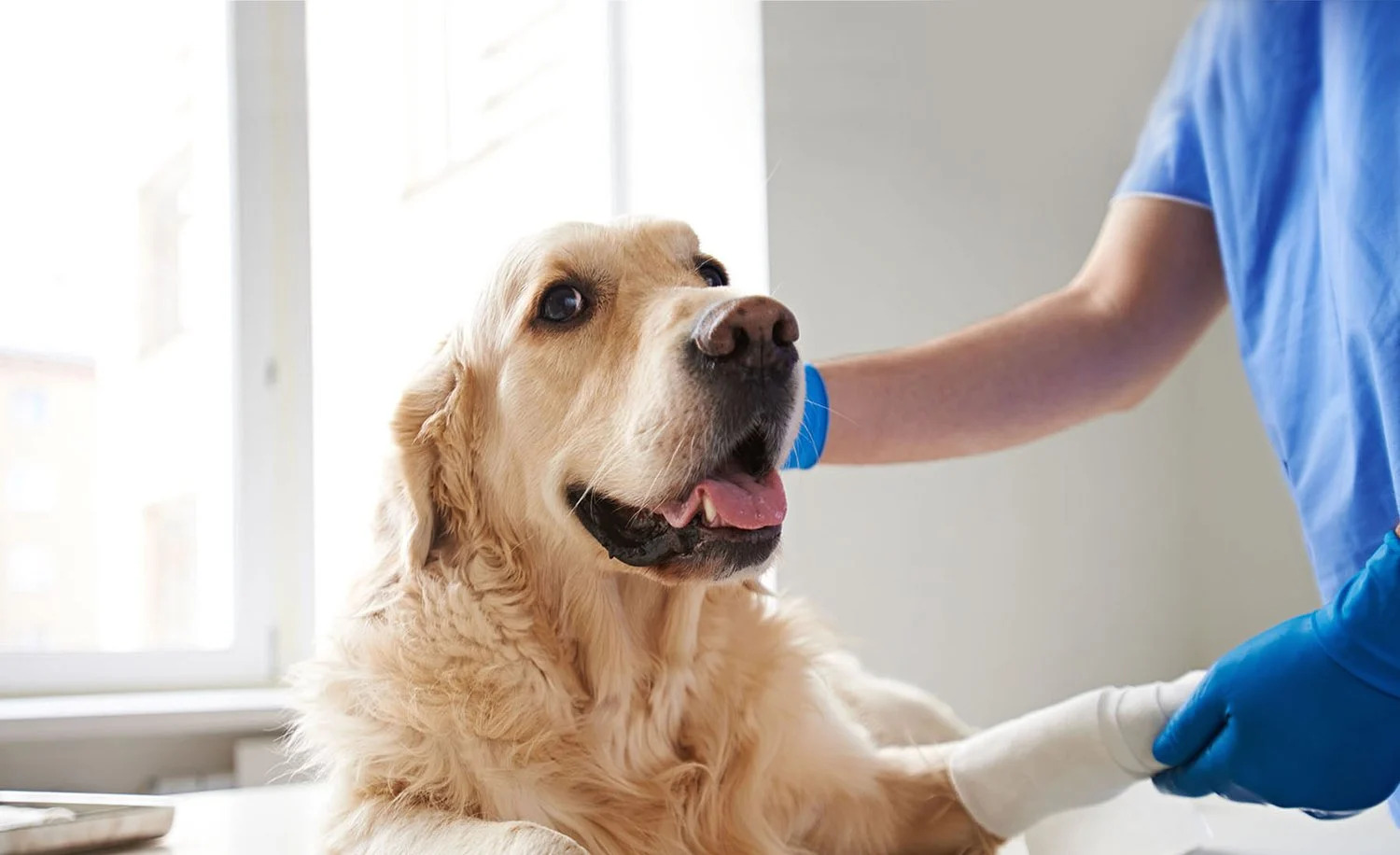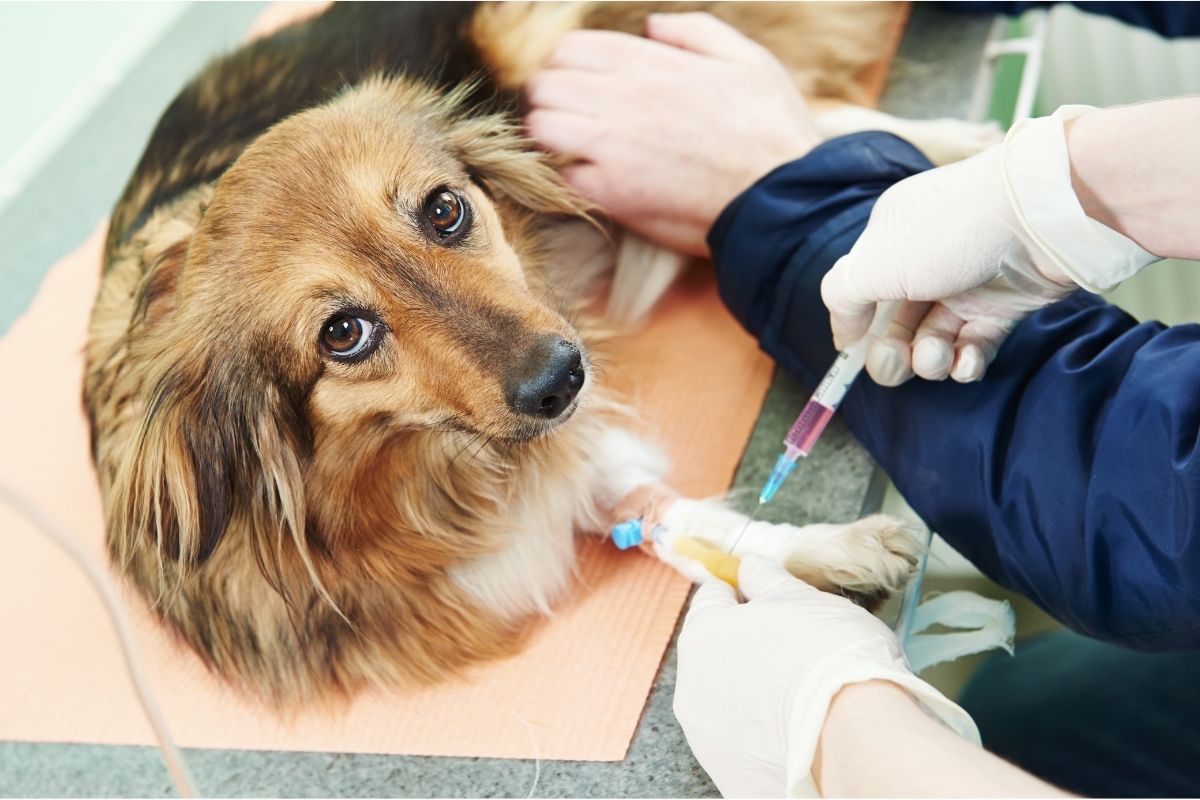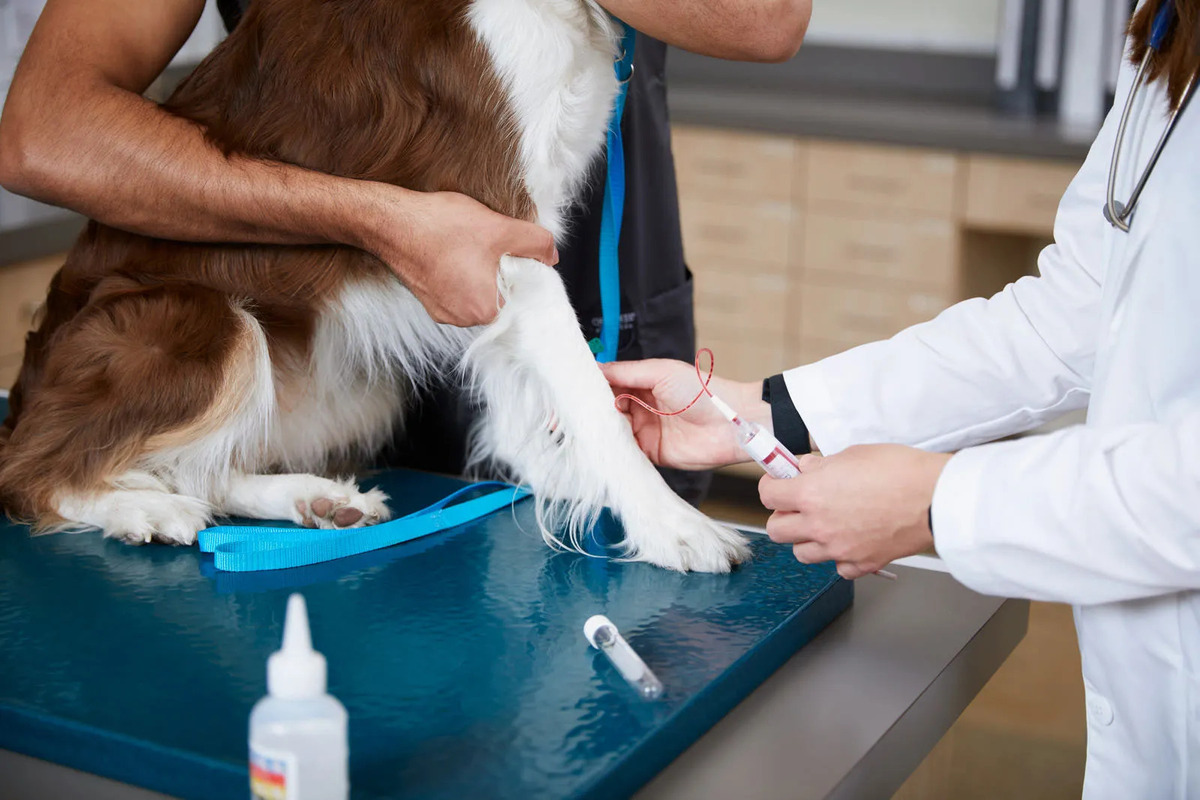Home>Health & Wellness>Common Health Issues>How Can I Test For Dog Allergies


Common Health Issues
How Can I Test For Dog Allergies
Modified: February 20, 2024
Learn how to test for dog allergies and manage common health issues. Find effective solutions to keep your pet and family healthy.
(Many of the links in this article redirect to a specific reviewed product. Your purchase of these products through affiliate links helps to generate commission for Pawsomeoldies.com, at no extra cost. Learn more)
Table of Contents
Understanding Dog Allergies
Dog allergies are a common health concern for many individuals. An allergy is the body's immune system overreacting to a substance that is typically harmless, such as dog dander, saliva, or urine. When a person with a dog allergy comes into contact with these allergens, their immune system perceives them as harmful invaders and triggers a defensive response, leading to various allergic symptoms.
It's important to note that dog allergies are not caused by the animal's fur, but rather by proteins found in the dog's dander, saliva, and urine. These proteins can become airborne and settle on surfaces, making it easy for individuals to come into contact with them, even if they are not in direct contact with a dog.
The body's immune response to these allergens can manifest in a variety of symptoms, ranging from mild to severe. These symptoms may include sneezing, runny or stuffy nose, itchy or watery eyes, coughing, wheezing, chest tightness, skin rashes or hives, and in severe cases, asthma attacks. Understanding these symptoms is crucial in identifying and managing dog allergies effectively.
It's important to recognize that dog allergies can significantly impact an individual's quality of life, especially for those who are passionate about having dogs as pets. However, with a better understanding of dog allergies and the available testing and treatment options, individuals can take proactive steps to manage their allergies and continue to enjoy the companionship of their furry friends.
By gaining insight into the nature of dog allergies and their potential impact on health and well-being, individuals can make informed decisions about allergy testing, treatment, and lifestyle adjustments to minimize exposure to allergens. This understanding is essential in fostering a safe and comfortable environment for both allergy sufferers and their beloved canine companions.
Read more: How To Test Your Dog For Food Allergies
Common Symptoms of Dog Allergies
Dog allergies can manifest in a variety of symptoms, which can range from mild to severe. It's essential to recognize these symptoms to identify and manage dog allergies effectively. Here are the common symptoms associated with dog allergies:
-
Sneezing: One of the most prevalent symptoms of dog allergies is frequent sneezing. When individuals with dog allergies come into contact with dog dander or other allergens, their nasal passages may become irritated, leading to bouts of sneezing.
-
Runny or Stuffy Nose: Allergic reactions to dog allergens can cause the nasal passages to produce excess mucus, resulting in a runny nose. Conversely, some individuals may experience nasal congestion, leading to a stuffy nose and difficulty breathing through the nostrils.
-
Itchy or Watery Eyes: Dog allergies often trigger allergic conjunctivitis, characterized by itchy, watery, and red eyes. This discomfort is a result of the body's immune response to the allergens, leading to inflammation of the conjunctiva, the thin membrane covering the eye.
-
Coughing: Exposure to dog allergens can irritate the respiratory system, leading to persistent coughing. This symptom is particularly common in individuals with underlying respiratory conditions, such as asthma, which can be exacerbated by dog allergies.
-
Wheezing and Chest Tightness: In some cases, dog allergies can cause wheezing, a whistling sound produced during breathing, and chest tightness. These symptoms are indicative of the airway constriction and inflammation that can occur as a result of allergic reactions.
-
Skin Reactions: Allergic individuals may experience skin rashes, hives, or general itching upon contact with dog allergens. This can occur through direct contact with a dog or exposure to surfaces or fabrics that have accumulated dog dander.
-
Asthma Attacks: For individuals with asthma, exposure to dog allergens can trigger asthma attacks, characterized by difficulty breathing, wheezing, and tightness in the chest. These attacks can be severe and require immediate medical attention.
It's important to note that the severity and combination of symptoms can vary among individuals. Some may experience mild symptoms that are easily manageable, while others may face more pronounced and disruptive allergic reactions. Understanding these common symptoms is crucial in identifying dog allergies and seeking appropriate medical guidance for effective management.
Types of Dog Allergy Tests
Dog allergy testing plays a pivotal role in identifying specific allergens that trigger allergic reactions in individuals. By pinpointing the precise allergens, healthcare providers can devise targeted treatment plans and recommend lifestyle adjustments to minimize exposure. There are several types of dog allergy tests available, each offering unique insights into an individual's allergic sensitivities. These tests include:
-
Skin Prick Test (SPT): This widely used test involves placing a small amount of dog allergen extracts on the skin, typically on the forearm or back. The skin is then pricked with a sterile needle to allow the allergen to enter the skin's surface. If an individual is allergic to the specific allergen, a small raised bump, similar to a mosquito bite, will appear at the test site within 15-20 minutes. The size of the bump indicates the degree of sensitivity to the allergen.
-
Intradermal Skin Test: In this test, a small amount of diluted allergen is injected into the skin, usually on the forearm or back. The injection site is then observed for a reaction, typically a raised, reddened area, indicating an allergic response. This test is often used when the results of the skin prick test are inconclusive.
-
Blood Test (Allergen-specific IgE Test): Also known as a radioallergosorbent test (RAST) or ImmunoCAP test, this method measures the levels of allergen-specific antibodies (IgE) in the blood. A blood sample is drawn and sent to a laboratory for analysis. The results indicate the presence and quantity of IgE antibodies produced in response to specific dog allergens, providing valuable information about the individual's allergic sensitivities.
-
Patch Test: This test is primarily used to identify contact dermatitis caused by direct skin contact with allergens. Small amounts of allergen extracts are placed on patches, which are then affixed to the skin for a specified period. Any skin reactions, such as redness, swelling, or itching, are assessed to determine allergic sensitivities.
-
Elimination Diet and Food Challenge: While not specific to dog allergens, these tests are employed to identify food allergies that may exacerbate dog allergies or contribute to similar symptoms. By eliminating certain foods from the diet and gradually reintroducing them under medical supervision, healthcare providers can assess allergic reactions and identify potential food triggers.
Each of these dog allergy tests offers distinct advantages and insights into an individual's allergic sensitivities. Healthcare providers may recommend one or a combination of these tests based on the individual's medical history, symptoms, and suspected allergens. By undergoing comprehensive allergy testing, individuals can gain a clearer understanding of their allergic triggers, paving the way for personalized treatment and effective allergen avoidance strategies.
How to Prepare for Dog Allergy Testing
Preparing for dog allergy testing involves several essential steps to ensure accurate and comprehensive results. By following these guidelines, individuals can optimize the testing process and facilitate a thorough assessment of their allergic sensitivities.
-
Consultation with Healthcare Provider: Before undergoing dog allergy testing, it is crucial to schedule a consultation with a qualified healthcare provider, such as an allergist or immunologist. During this initial appointment, individuals can discuss their allergy symptoms, medical history, and any previous allergic reactions to dogs or other allergens. This information enables the healthcare provider to tailor the testing approach to the individual's specific needs and concerns.
-
Medication and Dietary Restrictions: Individuals may be advised to temporarily discontinue certain medications that could interfere with the accuracy of allergy testing results. Antihistamines, which are commonly used to alleviate allergy symptoms, can affect the body's immune response and should be avoided for a specified period before testing. Additionally, dietary restrictions may be recommended to minimize potential interactions between food allergens and dog allergens during testing.
-
Understanding Testing Procedures: It is essential for individuals to familiarize themselves with the specific procedures involved in dog allergy testing. This includes gaining insight into the types of tests that will be conducted, such as skin prick tests, blood tests, or patch tests. Understanding the testing process can alleviate anxiety and enable individuals to prepare both mentally and physically for the upcoming assessments.
-
Communication of Concerns and Expectations: Open communication with the healthcare provider is paramount in preparing for dog allergy testing. Individuals should feel empowered to express any concerns, anxieties, or expectations related to the testing process. This dialogue fosters a collaborative approach to allergy testing, ensuring that the individual's needs and preferences are taken into account.
-
Preparation for Potential Allergic Reactions: While allergic reactions during testing are rare, individuals should be aware of the possibility and prepare accordingly. This may involve bringing any prescribed emergency medications, such as an epinephrine auto-injector for severe allergic reactions, to the testing appointment. Additionally, individuals should be mindful of any pre-existing health conditions that may influence their response to allergy testing.
-
Documentation of Symptoms and Triggers: Keeping a record of allergy symptoms and potential triggers, such as exposure to dogs or specific environments, can provide valuable insights for the healthcare provider. This documentation aids in identifying patterns of allergic reactions and assists in formulating targeted testing strategies to pinpoint the underlying allergens.
By adhering to these preparatory measures, individuals can approach dog allergy testing with confidence and readiness. This proactive approach not only enhances the accuracy of testing results but also fosters a collaborative and informed partnership between the individual and their healthcare provider in addressing dog allergies effectively.
Interpreting the Results of Dog Allergy Tests
Upon completion of dog allergy testing, the interpretation of the results is a critical phase that provides valuable insights into an individual's allergic sensitivities. Understanding and analyzing the test outcomes in collaboration with a qualified healthcare provider is essential for formulating an effective management plan tailored to the individual's specific needs.
The results of dog allergy tests, whether obtained through skin prick tests, blood tests, or other methods, reveal the presence and degree of allergic sensitivities to specific dog allergens. These results are typically expressed in the form of a comprehensive report detailing the individual's reactivity to various allergens, including dog dander, saliva, and urine proteins.
Interpreting the results involves assessing the magnitude of the allergic response, often indicated by the size of skin reactions in skin prick tests or the levels of allergen-specific antibodies in blood tests. Healthcare providers carefully evaluate these findings to determine the severity of the individual's allergic sensitivities and identify the specific dog allergens that trigger allergic reactions.
Furthermore, the interpretation of test results encompasses a thorough analysis of the individual's medical history, allergy symptoms, and potential environmental exposures to dog allergens. This holistic approach enables healthcare providers to contextualize the test outcomes within the broader scope of the individual's health and lifestyle, facilitating a comprehensive understanding of the allergic triggers.
Based on the interpreted results, healthcare providers can devise personalized treatment plans, allergen avoidance strategies, and, if necessary, immunotherapy options to mitigate the impact of dog allergies. By correlating the test findings with the individual's clinical presentation, healthcare providers can offer targeted recommendations to minimize exposure to dog allergens and alleviate allergy symptoms effectively.
In essence, interpreting the results of dog allergy tests is a collaborative process that empowers individuals and healthcare providers to make informed decisions regarding allergy management. This phase serves as a cornerstone for developing a tailored approach to address dog allergies, ultimately enhancing the individual's quality of life and fostering a harmonious coexistence with canine companions.
Treatment Options for Dog Allergies
Upon identifying specific dog allergens through comprehensive testing, individuals with dog allergies can explore various treatment options aimed at managing their allergic symptoms and minimizing exposure to allergens. These treatment approaches are designed to alleviate the impact of dog allergies on overall health and well-being, allowing individuals to coexist comfortably with their beloved pets. The following treatment options are commonly recommended for dog allergies:
Allergen Avoidance Strategies
One of the primary strategies for managing dog allergies involves minimizing exposure to dog allergens in the home environment. This may include implementing measures such as:
- Establishing dog-free zones within the home, particularly in sleeping areas and upholstered furniture.
- Using high-efficiency particulate air (HEPA) filters in HVAC systems and vacuum cleaners to reduce airborne allergens.
- Regularly washing and grooming the dog to minimize dander and saliva accumulation.
- Laundering pet bedding and other fabrics regularly to remove allergens.
- Considering hypoallergenic dog breeds or exploring alternative pets with lower allergenic potential.
Medications for Symptom Relief
Individuals with dog allergies may benefit from various medications to alleviate allergic symptoms, including:
- Antihistamines: These medications can help relieve sneezing, itching, and other allergic reactions.
- Nasal corticosteroids: These nasal sprays can reduce inflammation and alleviate nasal congestion.
- Decongestants: Oral or nasal decongestants may provide temporary relief from nasal congestion.
- Allergy shots (immunotherapy): For individuals with severe allergies, allergen immunotherapy can desensitize the immune system to specific dog allergens over time, reducing allergic reactions.
Symptom Management and Lifestyle Adjustments
In addition to allergen avoidance and medication, individuals can adopt lifestyle adjustments to manage their dog allergies effectively. These may include:
- Regularly bathing and grooming the dog to reduce dander and allergen accumulation.
- Using allergen-proof covers for mattresses, pillows, and bedding to minimize exposure during sleep.
- Practicing good hand hygiene after interacting with dogs and avoiding touching the face to prevent allergen transfer.
- Consulting with a veterinarian to explore dietary modifications and supplements that may support the dog's skin health and reduce allergenic potential.
Consultation with Healthcare Providers
Individuals with dog allergies should maintain open communication with their healthcare providers, particularly allergists or immunologists, to receive ongoing guidance and support. Healthcare providers can offer personalized recommendations, monitor treatment effectiveness, and make adjustments to the management plan as needed.
By integrating these treatment options and proactive measures, individuals with dog allergies can effectively manage their symptoms and cultivate a harmonious living environment with their canine companions. It is essential to approach dog allergy management holistically, considering both the individual's health needs and the well-being of their pets.













